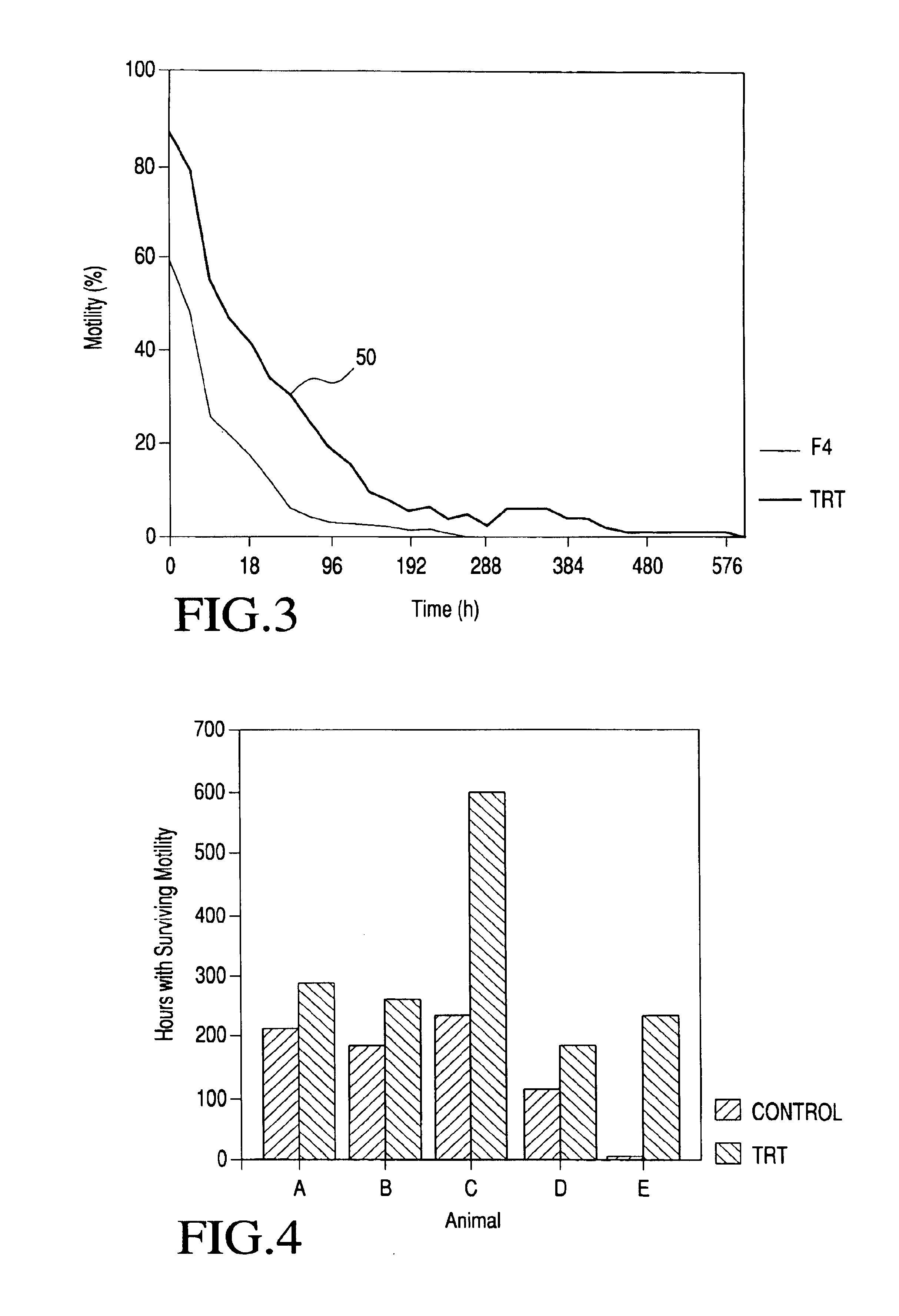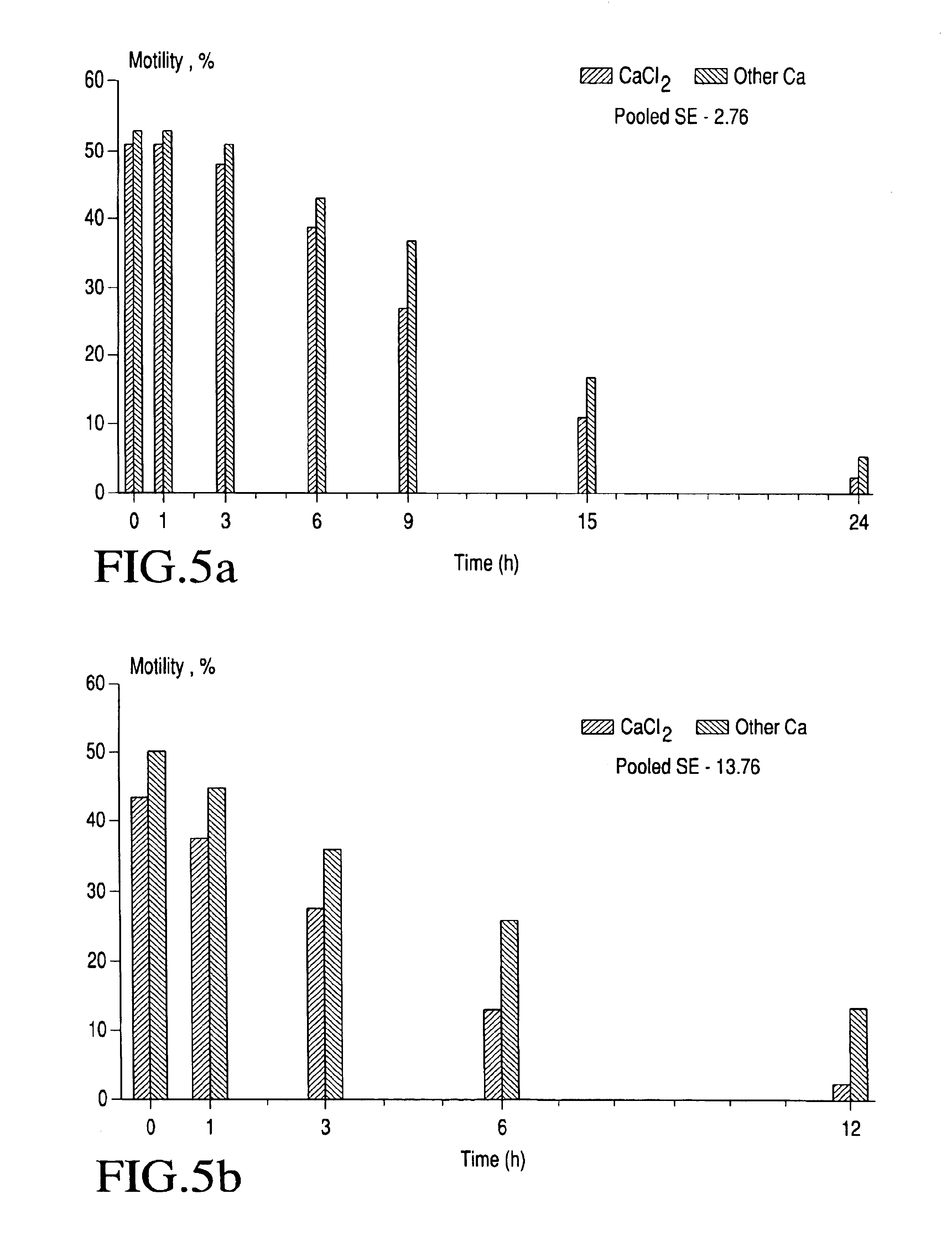Method for collecting and preserving semen
- Summary
- Abstract
- Description
- Claims
- Application Information
AI Technical Summary
Benefits of technology
Problems solved by technology
Method used
Image
Examples
Embodiment Construction
While some current techniques of semen collection attempt to maintain the temperature of the artificial vagina for the male's comfort, only a few attempt to insulate the collection container (porcine technique) and none attempt to maintain the pH of the specimen. Maintaining the spermatozoa at its preferred physiological temperature and a pH close to 7.4 will maintain the spermatozoa in optimum condition during collection, processing and in preparation for storage, and will improve post-storage semen parameters.
The collection system of the present invention has been constructed to answer the physiological needs of the spermatozoa at the time of collection and lessen or prevent shock damage which would lead to decreased fertility to the spermatozoa. This collection system could be used in any mammalian specie, including domesticated and non-domesticated animals, as well as in humans, and with any existing extender / cryoprotectant.
In accordance with the present invention:1) the samples...
PUM
 Login to View More
Login to View More Abstract
Description
Claims
Application Information
 Login to View More
Login to View More - R&D
- Intellectual Property
- Life Sciences
- Materials
- Tech Scout
- Unparalleled Data Quality
- Higher Quality Content
- 60% Fewer Hallucinations
Browse by: Latest US Patents, China's latest patents, Technical Efficacy Thesaurus, Application Domain, Technology Topic, Popular Technical Reports.
© 2025 PatSnap. All rights reserved.Legal|Privacy policy|Modern Slavery Act Transparency Statement|Sitemap|About US| Contact US: help@patsnap.com



